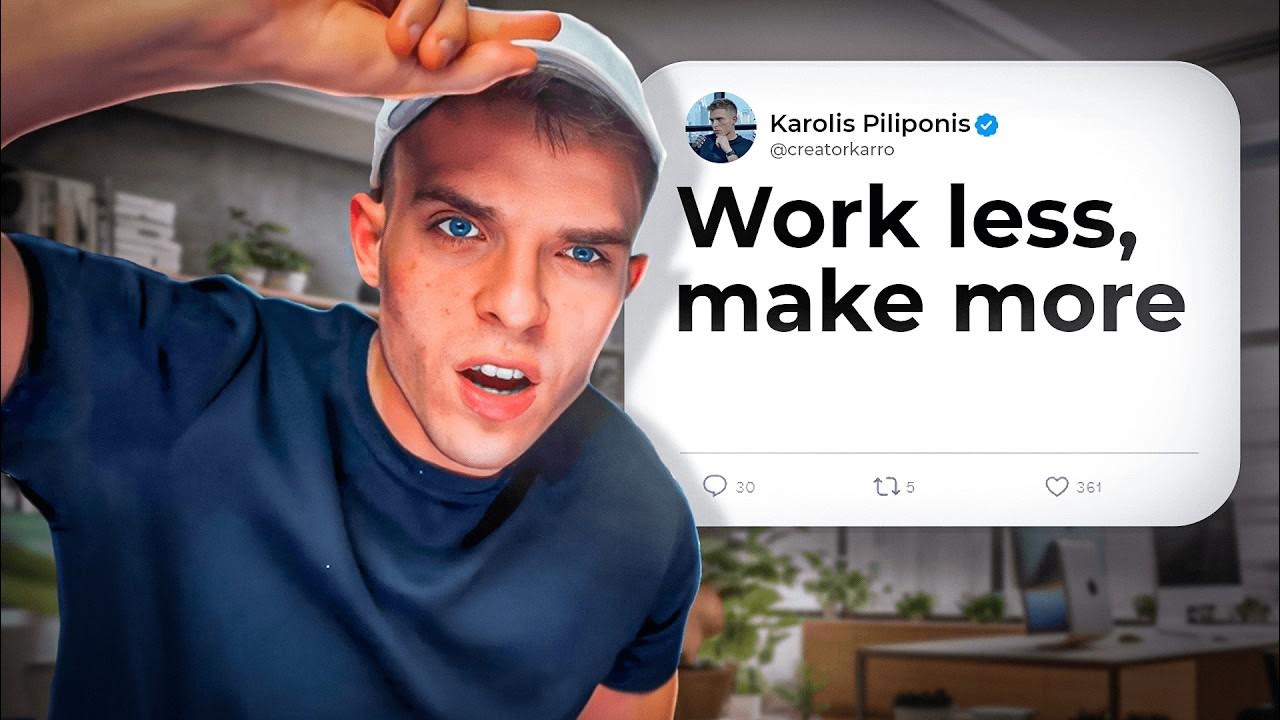How I Write a Viral LinkedIn Article
Summary
TLDRThis video script outlines the significance of LinkedIn Articles for business growth, offering a step-by-step guide to creating content that captures attention and converts to customers. It highlights the unique advantages of LinkedIn Articles over traditional blogging, emphasizing the importance of compelling headlines and cover images to boost click-through rates. The speaker shares practical tips on article formatting, including the use of white space, images, and hyperlinks, to enhance readability and drive traffic to one's website. The script also touches on the benefits of leveraging LinkedIn's algorithm for organic traffic and potential visibility in Google search results.
Takeaways
- 📈 LinkedIn Articles are a powerful tool for business growth, offering a unique platform to attract customers without the need for a separate website or blog.
- 🔍 There are two primary ways to share content on LinkedIn: posts and articles, with the latter being a distinctive feature of LinkedIn that is often overlooked.
- 📝 LinkedIn articles are akin to blog posts but without the setup and traffic-driving challenges associated with traditional blogging.
- 🚀 LinkedIn's algorithm promotes articles, potentially leading to visibility in Google search results, providing an SEO advantage for content creators.
- 🎯 The headline of an article is crucial, as it should evoke emotion and curiosity to entice clicks, and it can also include keywords for better search ranking.
- 🖼️ A compelling cover image is as important as the headline for attracting attention and clicks, and it should align with the headline to enhance the article's appeal.
- ✍️ Formatting is key when writing LinkedIn articles; using white space, bullet points, and images makes the content more readable and engaging.
- 🔗 Including hyperlinks within articles can direct traffic to your website or specific resources, facilitating conversions and business growth.
- 📊 Articles can serve as evergreen content, continuing to generate leads and appointments long after their initial publication.
- 🌟 To optimize your LinkedIn profile for business, ensure you have a clear profile photo and an impactful cover photo that reflect your professional brand.
Q & A
Why are LinkedIn Articles considered critical for business growth?
-LinkedIn Articles are critical for business growth because they provide a unique platform to share content that attracts attention and potential customers without the need to set up a separate website or blog. They are integrated into LinkedIn's algorithm, which can drive traffic to the content, and they can even appear in Google search results.
What are the two main ways to share content on LinkedIn?
-The two main ways to share content on LinkedIn are through posts, which are typically shorter-form content similar to what you see on other social media platforms, and LinkedIn Articles, which are longer-form content unique to the platform.
How does creating a LinkedIn Article differ from setting up a blog?
-Creating a LinkedIn Article differs from setting up a blog in that it allows you to natively create content on the LinkedIn platform without the hassle of creating and maintaining a separate website. LinkedIn also helps in driving traffic to your content through its algorithm.
What is the importance of a headline in a LinkedIn Article?
-The headline is arguably the most important part of a LinkedIn Article because it is the first thing that potential readers see. A strong headline invokes emotion and curiosity, encouraging users to click and read the article. It should also include relevant keywords for search engine optimization.
Why is the cover image almost as important as the headline in a LinkedIn Article?
-The cover image is almost as important as the headline because it works together with the headline to attract attention and increase the click-through rate. A compelling cover image that aligns with the headline can significantly boost the article's appeal and effectiveness.
How can LinkedIn Articles help in search engine optimization?
-LinkedIn Articles can help in search engine optimization by including specific keywords in the headline and content, which can help the article rank in LinkedIn's algorithm and potentially appear in Google search results, increasing visibility and reach.
What is the recommended strategy for writing LinkedIn Articles to maximize engagement?
-To maximize engagement, the recommended strategy is to use plenty of white space, include images and hyperlinks, and format the article in a way that is easy to read and digest. This includes using bullet points, bold and italic text for emphasis, and breaking up large blocks of text.
How can you use LinkedIn Articles to drive traffic to your website?
-You can use LinkedIn Articles to drive traffic to your website by including hyperlinks within the article that direct readers to your website or specific landing pages. This can help convert interested readers into potential leads or customers.
What is the significance of a high click-through rate in LinkedIn Articles?
-A high click-through rate is significant because it indicates that the content is appealing and relevant to the audience. LinkedIn's algorithm favors content with high engagement, which can lead to increased visibility and traffic.
Why is it important to match the headline with a curiosity-driven cover photo in a LinkedIn Article?
-Matching the headline with a curiosity-driven cover photo is important because it creates a cohesive and compelling message that entices users to click on the article. This synergy between the headline and cover image can significantly increase the click-through rate and overall engagement.
Outlines

このセクションは有料ユーザー限定です。 アクセスするには、アップグレードをお願いします。
今すぐアップグレードMindmap

このセクションは有料ユーザー限定です。 アクセスするには、アップグレードをお願いします。
今すぐアップグレードKeywords

このセクションは有料ユーザー限定です。 アクセスするには、アップグレードをお願いします。
今すぐアップグレードHighlights

このセクションは有料ユーザー限定です。 アクセスするには、アップグレードをお願いします。
今すぐアップグレードTranscripts

このセクションは有料ユーザー限定です。 アクセスするには、アップグレードをお願いします。
今すぐアップグレード関連動画をさらに表示

how to actually become a 6 figure personal brand (it's not that hard)

HOW TO MAKE MONEY FROM $0

How to Write Content that Ranks #1 on Google

One LinkedIn Post Got Me 5k Followers: How To Write Viral Posts On LinkedIn

How to Create a LinkedIn Carousel Post with 20K+ Impressions/post? (2025 Tutorial)

How I Made $411,212 as a One-Person Business (Starting with $0)
5.0 / 5 (0 votes)
